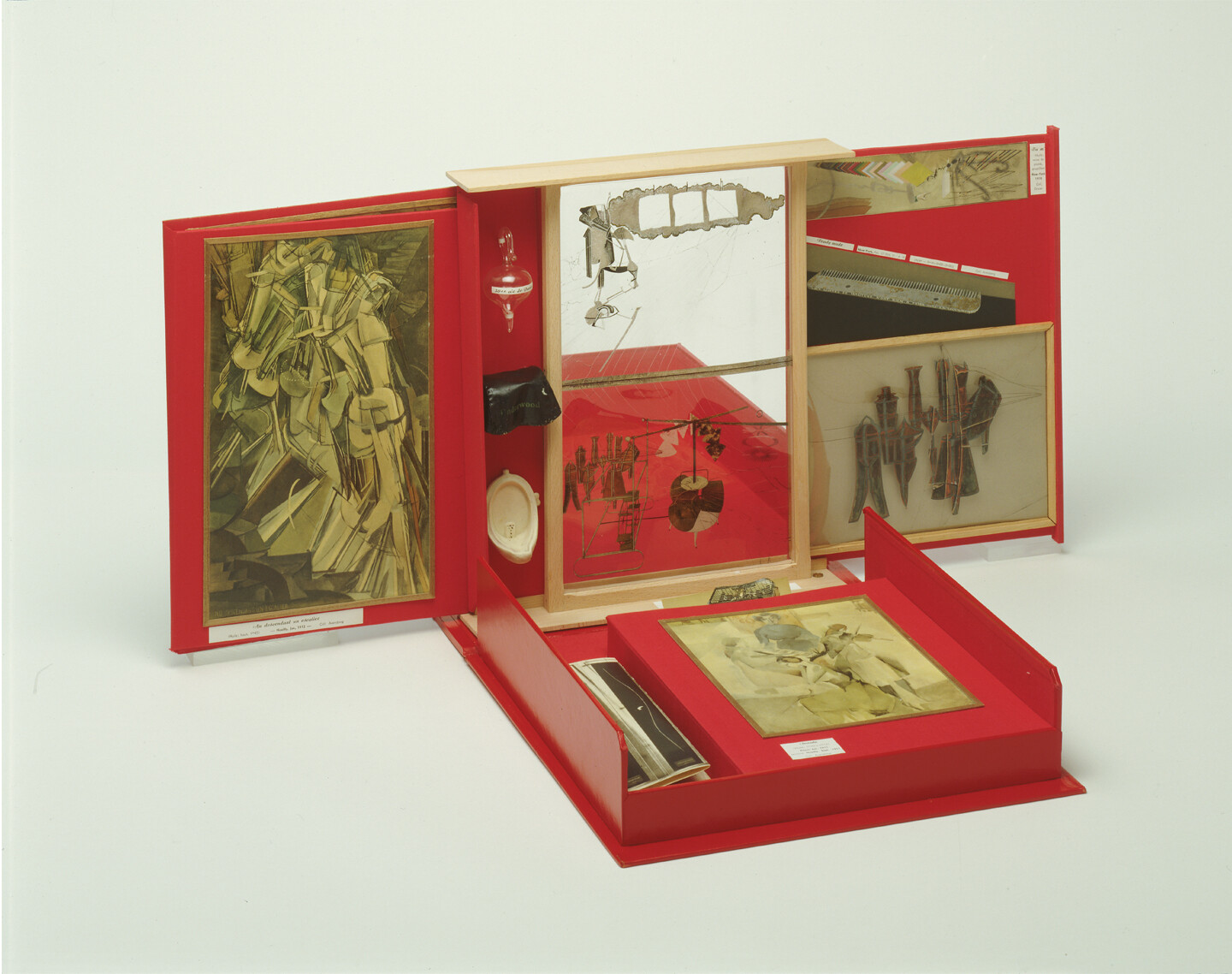The Essential Duchamp
December 22, 2018–April 7, 2019
Marcel Duchamp (1887–1968), fundamentally changed the way we think about creating and interpreting art. Duchamp, who first used the concept of “readymade” when appropriating a manufactured object as an artwork, subverted the traditions of western art history with Fountain, an ordinary urinal that he signed with an alias and submitted for an exhibition in 1917. Duchamp’s expanded definition of art had a great and profound impact in the wider culture during the 20th and 21st centuries.
The Essential Duchamp commemorates the 50th anniversary of Duchamp’s death before the enigmatic Étant Donnés─the artist’s last work─was introduced to the world, and presents to the Korean audience a work from the collection Musem of Modern and Contemporary Art, Korea, as well as over 150 pieces of enormous collection and archive materials of the Philadelphia Museum of Art, the museum that holds the largest number of works by Duchamp in the world.
The exhibition will offer a chronological account of Duchamp’s life and art. The first section explores the period from 1902 through 1912, when he experimented with different avant-garde styles ranging from Impressionism to Symbolism and Fauvism. It concludes with his highly original engagement with Cubism and his life-changing decision at the age of 25 to abandon the painter’s craft and seek new ways of working.
The second section examines the crucial interval between 1912 and 1917, when Duchamp pushed past the boundaries of painting as conventionally understood. It was during these years that he generated the ideas for his magnum opus, The Bride Stripped Bare by Her Bachelors, Even (also known as The Large Glass) (1915–23) and then embarked upon its construction after moving to New York.
The third section follows Duchamp in Paris during the decades of the 1920s and 1930s, then back to New York as an émigré during the Second World War. Early in this period, he resolved to shift his vocation from art to chess, and went on to pursue chess with the commitment of a professional. At the same time, Duchamp invented a female persona named Rrose Sélavy and used this identity to pursue new projects. Some of those works were experiments in word-play such as puns and verbal games. Others were mechanical contraptions based upon his long study of the principles of perspective and optics. These activities dovetailed in Anemic Cinema, the short avant-garde film Duchamp produced in 1926 with the assistance of his frequent accomplice, the photographer Man Ray. By the mid-1930s, Duchamp became interested in the idea of revisiting his earlier and more recent works in the form of reproductions, resulting in the portable museum of miniatures entitled From or by Marcel Duchamp or Rrose Sélavy (also known as Box in a Valise) (1935–41).
The last section explores the remaining decades of his life when Duchamp achieved legendary status in the art world. It reflects upon themes that had long preoccupied Duchamp, including the erotic as a doctrine, and the aesthetics of realism and illusion. The exhibition concludes with materials illuminating the production of his final work, a three-dimensional construction built around a life-sized mannequin of a female nude, Étant donnés. He created it in near-total secrecy in his New York studio between 1946 and 1966. Neither The Large Glass nor Étant donnés can travel for exhibition, but these works will be evoked by related pieces: The Bride (1912) and Chocolate Grinder (1914) for The Large Glass, and a group of cast sculptures known as “erotic objects” for Étant donnés. In addition, these two major works will be represented digitally in the exhibition.
With the most comprehensive coverage of Duchamp’s art and life ever presented in Asia-Pacific region, The Essential Duchamp at the Museum of Modern and Contemporary Art, Korea will offer a meaningful contribution both to retrace the genesis of contemporary art and to newly tune our artistic strategies to face the environment given to us today.
Organized by Philadelphia Museum of Art in cooperation with Museum of Modern and Contemporary Art, Korea
Sponsors
Hyundai Department Store
Lee Sangil Culture Foundation
Terra Foundation of American Art


